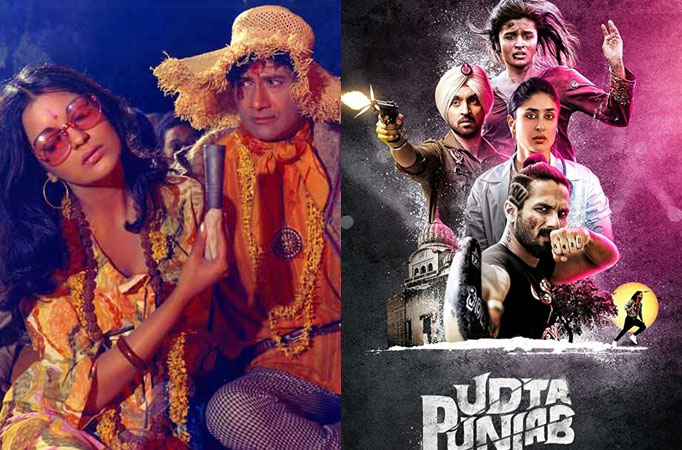
The SSR case has given a drastic look to the Bollywood as a industry now, as we see the big names getting involved in the Bollywood drug Nexus, Bollywood actors like Deepika Padukone, Sara Ali Khan, Shraddha Kapoor have been summoned by the Narcotics Control Bureau (NCB) in their alleged connect with the drug use and supply. With these top actresses caught in the drug net, the big question on everyone's mind is : Does cinema imitate life or life imitates cinema? In a Bollywood-fixated country, life imitates cinema as film personalities are looked up to as inspirations by the youth of the country. This drug-probe has shaken Bollywood with almost everyone running scared. But those who make cinema say they have picked up topics of drugs in films, be it smuggling or consumption of drugs by the protagonist or a hero fighting the bad man selling drugs, from real life and newspaper clippings. So if cinema does reflect what is happening in the society, ETimes decided to look at the history of portrayal of drug use on the celluloid. The attempt in chronicling this instance is not so much to make a comment on the nexus between B-town and drugs mafia but to document the history of filmmakers weaving in scenes where characters are shown to consume drugs and other substances.
So when did films introduce drugs to cine-goers ? Since the Sushant Singh Rajput case has brought marijuana back in the news, marijuana first found its mention in Dev Anand’s Hare Rama Hare Krishna (1972), where Zeenat Aman played a hippy addicted to drugs. The legendary actor-filmmaker aimed to send out an anti-drug message through his film and expose the misuse of religion to encourage it. The song, Ram Ka Naam Badnaam Na Karo captured it all. Since then, Bollywood has churned out films based on drugs, in succession. The prominent one being Naam (1986), Jaanbaaz (1986), Jalwa (1987), Gumraah (1993), Paanch (2003), Dum Maaro Dum (2011), and Udta Punjab (2016).
'The topic of drugs as the premise of our films was borrowed from Hollywood'
Much before Hare Rama Hare Krishna, Dev Anand tried to introduce the subject of drugs to India with a film titled, The Evil Within (1970), but all his effort came to nought. Based on opium smuggling, the film was shot majorly in the Philippines and was produced by 20th Century Fox. The subject matter of the film was so controversial that the film could never pass the muster of the Censor Board.
Talking about how the topic of drugs made an entry in Hindi films, writer Kamlesh Pandey says, “The topic of drugs as the premise of our films was borrowed from Hollywood. Substances like ganja, opium, and bhang had been an integral part of social interaction in India, especially in rural India for thousands of years. In fact, drinking was more looked down upon than these substances. Around the late '70s and early '80s, the hippie culture took over the US and Europe and drugs became a popular element in their narrative, which we borrowed. It replaced gold, electronics, and watch smuggling in our movies. The villain in almost every second Hindi film was smuggling drugs and even consuming it. Jalwa was the first film to focus on the personal cost of drug addiction.”
ALSO READ – (Bollywood drug cartel: Shraddha Kapoor confesses to having attended the party at SSR’s farmhouse but denies consuming drugs)
When Ramanand Sagar made Charas in 1976, it came as a shock to the film industry as he was known to make family films. The film did face problems, but the title and the timing of the film were conducive as its release coincided with the phase when the country witnessed the draconian Emergency. The period also saw the Censor Board coming down heavily on films. Sagar had already rolled out the publicity and pre-release drill, so the film was given some cuts and allowed to release. The film focused on busting an international racket and was partly set in Uganda during the Idi Amin era. Prior to this, Sagar had made Jalte Badan (1973), a film on drug addiction among the youth.
'Cinema changes as the lifestyle changes'
Film critic Dilip Thakur is of the belief that cinema takes its inspiration from real life. “Cinema has always taken a leaf out of life and put it in movies. So from cigarettes or beedis, films moved on to ganja and then we saw lethal drugs that are killing the youth of our country (Udta Punjab). Cinema changes as the lifestyle changes. This is one negative that should not be glorified in cinema,” says Thakur. The cinematic imagination of drugs can be seen in the excesses it shows, which reflects the normative idea of drugs in Indian society, says sociologist Shiv Vishwanathan. “Given the new middle-class aspiration, drugs are the new normalised pathology. It is the beginning of a new plot that turns you global, criminal, and anti-national. I think in that way the drug exceeds the old imagination of alcohol or sex. In that sense, the drug represents the globalisation of crime and pathology," he elaborates.
It was Pankuj Parashar's Jalwa that openly exposed the nightlife of Goa with the subject inherently being anti-drugs. So what made the filmmaker choose the subject? “I had done some research on addiction spreading among youth for an episode of Karamchand (1983). It was scary how the dealers were encouraging and enticing the youth. That's when I decided to address the issue in the film,” recalls the filmmaker.
Bejoy Nambiar made Shaitaan (2011) that had drugs playing an important part in the story. So how much of it was derived from real life? Bejoy, who is known to make some hard-hitting subjects, mentions that a lot of it was dug out from real police case files. “Some parts of it were dramatized and fictionalised to suit our narrative, but it was largely based on true cases.”
'The bigger the villain, the more exciting a film is'
Films have often been a reflection of what’s happening in society and it holds true even for the subject of drugs. Films like Jalwa, Jaanbaaz, and Gumraah came at a time when the drug menace was at its peak in India. The level became so alarming that the government through its ads, spent a lot of money in educating the public in general and the youth in particular about the level of damage it could do to an individual. Television also explored the topic of drug menace in Subah (1987) on DD around the same time.
In the pre-liberalization era, filmmakers concentrated on the subject of smuggling of drugs from the Middle East and other countries, and films like Naam and Gumraah, fell in this bracket. The drug mafia was given prominence in films like Jaanbaaz, Charas, Kaminey, Once Upon a Time in Mumbaai and Dum Maaro Dum. A senior filmmaker said, “The bigger the villain, the more exciting a film is. Drugs are a multi-billion-dollar industry. No wonder, criminals get into the business of drug peddling. Profit at all costs even if it destroys innocent lives is the maxim of these drug lords. Bollywood films try to show that bad boys sell drugs and good boys fight with all their might against all those who sell poison.”
Does Bollywood consume drugs ?
Drug consumption in the fashion and film industry is an open secret, and Madhur Bhandarkar’s Page 3 (2005), Fashion (2008) and Heroine (2012) explored this subject. He had earlier said in one of his interviews that his movies are not exposé, but hold up a mirror to society. “They are not judgemental and I show what happens in our society,” the filmmaker had said. What Bhandarkar has shown on screen is now being seen in real life. And it is only murkier with some top actresses under the drug scanner. So, here, cinema imitates life but it is from a point of view of an insider.
Nina Arora who wrote Madhur Bhandarkar’s Page 3 and when asked how much of it was fact and fiction, she said, “The story and screenplay of Page 3 were based on my experiences as a journalist. I stuck to hard facts. The challenge lay in plaiting factual incidents emotively as well as satirically into a screenplay without compromising the truth.” So, adding insiders' view, Nina said, “The correct perspective is to see Bollywood as nestled within society. Remember even way back in 70s and 80s, a wide cross section of society – not only film stars and filmmakers – also flocked to Osho’s ashram in Pune where hash and promiscuity were a part of the syllabus! Yes, quite a few in Bollywood did drugs. Sanjay Dutt wasn’t the only star kid to get hooked. A certain superstar actress was on it; her young sister actually died of an OD in ‘90. But most – especially the theatre and art cinema crowd – stuck to hash. They didn’t accelerate towards cocaine. Hash users proliferated in the late 90s and believe me, those stars were ‘outsiders’ who snorted their way into Bollywood and not the other way around. The IPL clique was hazed during the entire season,” Nina adds.
But columnist and film producer Pritish Nandy says, “We cannot confuse cinema with life. People shown drinking, smoking, or doing drugs on screen may be teetotallers, non-smokers, and entirely drug-free in their real lives. Having said that, however, it is quite possible that among the lakhs of people who work for the industry across the nation, there will be some people who may drink, smoke, and do drugs as there are indeed such people in every profession that exists in this country. I am confident that the film industry does not have more than the usual quota that exists everywhere. It is ridiculous to believe that glamorous industries have people who live decadent lives. My experience is just the opposite. Glamorous people live ordinary, commonplace, workaday lives. The rest is myth and mystery.”
Films like Dev.D (2009), Go Goa Gone (2013), Raman Raghav 2.0 (2016), and Sanju (2018) explored the subject too, but in a fleeting manner. Udta Punjab came at a time when the drug menace had reached an alarming level in Punjab. It still is. Pahlaj Nihalani, who was the Censor Board chief at the time of the release of the film, says, “More than the drugs, it was the timing of the film that was an issue and it looked as if there was a motive to defame the state of Punjab. We all know drugs are rampant not only here, but internationally also.” Citing the success of films like Hare Rama Hare Krishna and Charas, the filmmaker dismisses the idea that "films glorify drugs and says that films only show what is happening around. They are a mirror to society.”
Censor Board's battel with drug scenes
The Guidelines of the Central Board of Film Certification (CBFC) very clearly states that scenes that tend to encourage, justify, or glamorise drug addiction are not shown. Vinayak Azad, former regional officer of the Censor Board said, “There is a guideline in the cinematograph act which says drug use should not be glorified. However, all scenes have to be seen in the larger context of the film and not on a piecemeal basis. At the end of the day, it boils down to sensibilities and common sense.”
Vasan Bala's Peddlers was set in Mumbai and revolved around 20-year-old destitute boys who get trapped in the drug trade and a young cop, who tracks them. Peddlers did show that the Narcotics department was more corrupt than the people who sell drugs for money. The Censor board was then headed by Pankaja Thakur and she could have objected to the film showing a government officer in bad light, but it was cleared by the Board with an A certificate. The film took a while to get distributors and just recently Anurag Kashyap did tweet to Eros Now to release the film on the digital platform.
Will Bollywood stay away from drugs on screen ?
While the current investigation is still underway, writers from the industry who are working on future projects say that the topic of drugs will never be a taboo as far as documenting it on the big screen is concerned. A writer who is working with a big production house on a project that talks about its protagonist consuming drugs says, "Life is not linear. We all go through ups and downs and if a character has consumed drugs and is either going to rehab or is suffering under the effects of narcotics then that will be shown on the big screen as well. I don't think the industry will in anyway stay away from writing or weaving scenes of dug consumption in the movies. On the contrary you might actually see more films and many be subjects that deal with such cases. After all movies are made to make money and lure in the audience and given the soaring TRPs that TV channels have got over this case I think a lot of writers might be asked to somehow bring in such a situation or a narrative in their films.
SOURCE – E TIMES
ALSO READ – (Javed Akhtar takes jibe at news channels highlighting K.Jo party video)









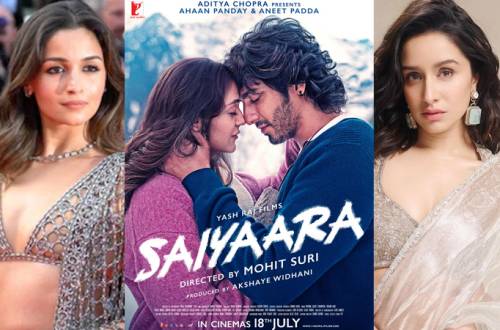
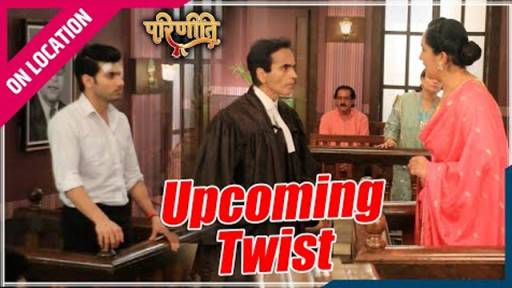
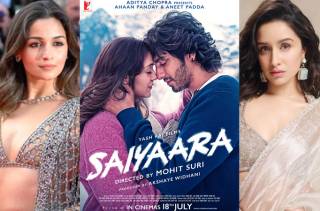
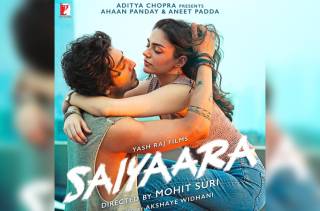

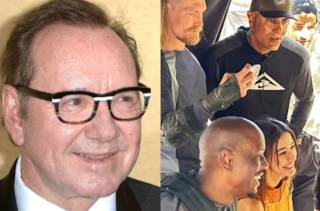
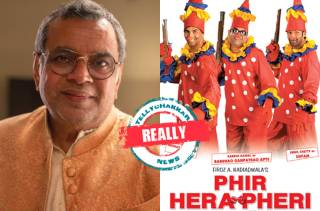

Add new comment